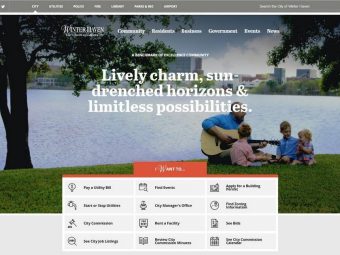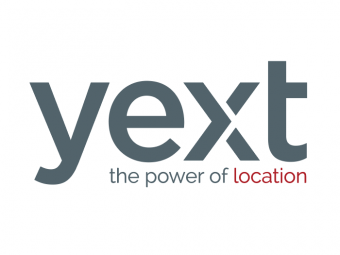One of the most challenging aspects of SEO is helping clients understand what SEO actually is, as a service. When I meet with prospective clients, they typically understand that SEO has to do with ranking better in search engine results, but often times they don’t know how this is done and what the implications of a well or poorly managed online presence are. One of the ways I explain our SEO service at CNP is to compare it to a landscaping service.
If you think of a company’s website in terms of a corporate asset similar to a physical “brick-and-mortar” location or branch, it’s easy to see why it would need a landscaping-like service. Even when a company builds the nicest branch/location possible, if nothing is done to maintain the building and its surrounding landscape, it will quickly turn from something that drives business to something that drives business away. Most businesses should look at their website the same way.
Websites are a good value
When you look at a website in terms of corporate asset, it’s actually a pretty good deal. If you look at the cost that goes into opening the typical physical location for a business, it’s normally in the six- to seven-figure range, with enormous ongoing expenses in the form of utilities, staffing and maintenance costs (like landscaping!).
Now compare that to the cost and efficacy of a website:
- Are more of your customers going to see that one single location or your website?
- What do more people do these days when they need a product or service? Do they drive around looking for who sells it, or do they check search engines first?
- Where can you most effectively deliver information about where you are, what you do and how you do it? Is it a physical location or a website?
The answers to these questions vary widely, but in many cases you can start to see why a good-looking, well-maintained website might be more imperative than a physical location and why they might at least deserve equal attention to their brick-and-mortar counterparts.
Having a well-designed, attractive website that presents your business properly is just the first step. Just like if you don’t have proper signage, an easily accessed parking lot and stuff to fill your location’s building relevant to what you do, your brick-and-mortar location won’t be successful no matter how good it looks and how well it’s built. Many parallels can be drawn between these imperatives of physical locations and websites:
- Proper signage – to be effective your website must be able to tell visitors, both human and bots, what your business is and what you do.
- Easily accessed – the website needs to be accessible by all visitors whether they are on desktops, laptops, tablets or cell phones.
- Relevant content – a beautiful website with no content and is never updated is just as bad as an empty, abandoned-looking location. Say you needed a TV and wanted to get a good deal on it, which location would you assume to be better? Would it be the store filled with a of selection tons of electronics that’s always changing or would it be the store with only a few items in it that has stayed the same for the past several years? Search engines make the same sort of evaluations of websites and aren’t going to send their users to sites they don’t trust.
Landscaping and SEO both require …
Good planning
SEO is an ongoing pursuit, but a lot of it comes down to your planning. A good landscaper knows which part of a garden needs sunlight and what to plant in high-traffic areas. To do this, you must understand how a space is used and outside factors that affect it. SEOs work with a website’s analytics to understand how the site is used, where visitors are coming from elsewhere on the Internet and form a user experience (UX) around that information.
Experience
No matter how much time you spend tending and observing your own backyard, you can’t replace the expertise that comes from seeing hundreds of yards flourish and wither. An experienced outsider can often times suggest tactics that haven’t been tried yet, and can have a better understanding of what can be effective and what can be a waste of time. A good SEO always knows where the low-hanging fruit is.
The ability to adapt to changes
Seasons and climates change. Watering and fertilizer regimes that work wonderfully one year might destroy a yard the next. Year to year, SEO strategies can be the same way. Buying links to your site, exact-match domains and guest-blogging might have been great in a previous years, but this year they’ll probably do more harm than good. To make things even more difficult there isn’t exactly a Farmer’s Almanac for SEO.
If you want to have the same sort of presence on the Internet as in the real world, expect to put in the same amount of effort into upkeep as you do your real life business location(s). Today, more than ever, a website is likely to be a prospective customer’s first impression of you. If you don’t have someone at your company whose express job it is to feed, water, trim and mow, it’s probably not too likely to get done, is it?
In this way an SEO is most like a landscaper. The work of optimization, link-building, relevant content generation and web mastering is tough and sometimes tedious work. Landscaping, like SEO, is normally outsourced because it’s not something employees in most fields want to do as a part of their workday. An accountant isn’t going to want to go mow the lawn in the middle of one of their workdays. What’s worse, they probably wouldn’t be all that good at it either. In the interest of making sure it gets done, and done right, hire a good SEO to help you out.




